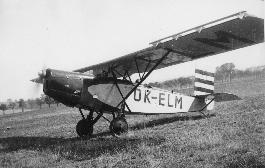 |
Letov S-239.16 ie the 16th production S-239 was turned out from the 1933 year. Ten of them were used by Flying Clubs of the Masaryk Flying League units till March 15, 1939. Dimensions : Span : 10 m, length 6.14 m, empty weight 375 kg, crew of two. Powerplant : a 85 Walter Minor 4 engine. Performance : Top speed 174 km.p.h., climb to 1 000 m in 5 min 16 sec, range 420 km
|
| |
|
|
An Letov S-239 upper-wing monoplane powered by a radial Pobjoj R engine of British origin, which proved to be the best one for sporters. But the Pobjoj licence was not purchased and that reason for a Pobjoj-powered production of S-239s was not realized. Wood-framed wings and tail-plane and fin covered by plywood, elevator and rudder by fabric. Fuselage steel-tube-framed, fabric-covered
|
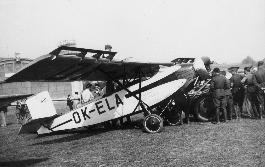 |
| |
|
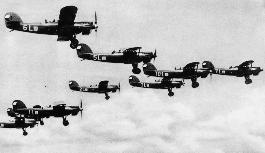 |
Shot of A 100 bombers practicing formation flight for an Air Show.
|
| |
|
|
After the Aero failure with an A-42 upper-wing-monoplane early 30s, designing biplanes went on also in this Company. The concept of an A-100 type proved to be wrong several years later – as recce as bomber planes flown in WW II were monoplanes.¨
|
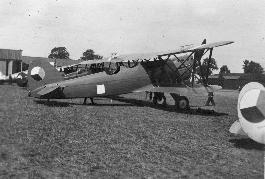 |
| |
|
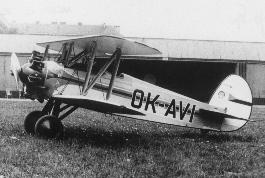 |
An Avia B-122 acrobatic biplane flown not only by the „Air King „ František Novak, but also by Ambruz and Siroky. Two built by the Avia Comp. in 1934 due to the Intl Aeronautical Contest held in France and painted in blue, white and red – the Cz national colours. Novak launched his splendid aerobatics career here placing the fourth, Ambruz eighth. Wood-framed wings as well as rudder and elevator fabric covered, tail plane and fin covered by plywood Fuselage steel-tube-welded and covered by fabric, sheet metal shaped cowling Dimensions : Span : 8.85 m, length 6.55 m, empty weight 760 kg Powerplant : a 260 hp radial Walter Castor II, two-blade wooden propeler Performance : Climb ratio : 8.5 mps, service ceiling 6 000 m, range 530 km
|
| |
|
|
Avia A-122 a Lt. František Novak – The King of the Air – who declined to serve with Luftwaffe after the Germans had occupied the Czech and Moravian lands on March 15, 1939. He fled to France via Poland and died there in Apríl 1940. Novak performed aerobatics though having been under knife several weeks ago. His remains were airlifted to Czech Republic in August 2002 and laid in their final resting place at his native village of Sokolec nr. Nymburk, C Bohemia.
|
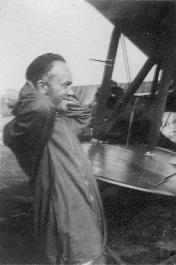 |
| |
|
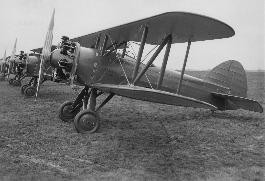 |
An fifteen-pcs batch of Avia A-122 Walter Castor aircraft built for an Soviet customer. It had been ordered as an reaction of the Societ Union to a very successful performance of the Czech Aeronautic pilots on their three A-122s in Moscow on October 15, 1936. Our pilots were invited after the Soviet Military Group had paid a visit to the Czechoslovak Republic in summer of 1936
|
| |
|
|
An F/O Novak`s Avia BA-122 personal plane on which his mastery of aeronautics was shown by him at Air Shows. Lower surfaces creamy, upper ones red. In addition of these two colours, names of the the places where the „King of the Air “ had performed his skills were added to them along the fuselage port side. Two machines had been built due to the 1937 Zurich Intl Meeting. Siroky placed second, Novak third, Ambruz eighth. Dimensions : 8.85 m, length 6.80 m, empty weight 861 kg Powerplant : a 385 Avia Rk-17 engine Performance : Top speed 270 km/p/h, ratio of climb 4mps, service ceiling 7000m, range 575 km
|
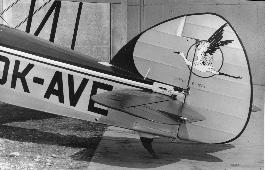 |
| |
|
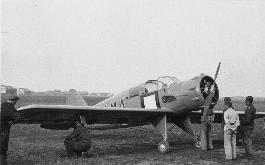 |
An Aero-200 low wing monoplane built by the Aero Company in mere two pcs as the first aircraft of this cathegory on the occasion of the 1934 Challenger Contest. Our women won the Nations´ Trophy. Crew of two plus two passengers, span 11, 10m , length 7, 60 m, empty weight of 560 kg, powered by an 200 hp Walter Bora engine. Top speed 255, cruising one 220 km/p/h. Service ceiling 5000 m, range 800 km. Steel-welded-pipes fuselage covered by fabric except engine cowling. Wooden framed wings folded backwards as well as tailplane and control surfaces fabric covered.
|
| |
|
|
An Avia B-534 fighter biplane of the second batch armed by two machine guns. Its predecessors had been the B-34 and B-234 types. The B-534 one had been flight-tested in Aug 1933. Compared with the first prototype, the cockpit was covered by a canopy. Dimensions : Span 9.4 m, lenght 8.1 m, empty weight 1385 kg, take off-one 1913 kg Powerplant : an 750 hp Avia HS 12 Ydrs engine
|
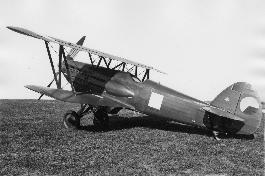 |
| |
|
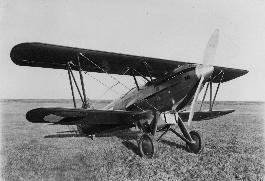 |
An No IV batch Avia B-534 fighter biplane. The cockpit covered by a canopy and wheels hooded. Aircraft of all the batches were equipped with racks for small splinter bombs.
|
| |
|
|
An Aero MB-200 /Marcel Bloch 200/ bomber of the Brno Bomber Regiment. The Avia Comp. built under licence 70 machines powered by two 700 Walter K-14s, the Aero production amounted 44 ones. This type was outdated even before 1935. The failure of one engine resulted in an inevitable crash and death of the crew. Fuselage as well as wings steel-framed covered by sheet metal plates Dimensions : Span 22.45 m, length 16 m, empty weight 4 474 kg, fixed undercarriage Powerplant : two 800 Walter K-14s driving three-blade metal propellers Performance : Top speed 245 km.p.h.,but only 205 in reality, climb to 4 000 m in 15 min, service ceiling 6 000 m Bombload : 1 500 kg, defensive : five machine guns in three turrets. Crew of 4 -5
|
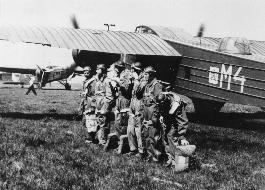 |
| |
|